Hi, y’all, this page is focused on the Batelle-Darby Metro Park located roughly 30 minutes west of Columbus, Ohio. We were asked to document 4 plants that prefer limestone-rich soil, 2 invasive plants and 2 flowers with exserted stamen. Unfortunately, I had missed the initial field trip, so in the time I had on hand I could only find 3 plants preferring lime, 1 invasive plant and 1 flower with exserted stamen. These plants are listed below. Additionally, as you scroll down the page you will find several paragraphs describing the geologic and natural history of central Ohio!
Black Walnut
(Juglans nigra)
Black walnut is a tree that can be found all over the Eastern United States. It’s characterized by alternate pinnately compound leaves with many small leaflets. The heartwood has a beautiful dark color, which makes these trees highly sought after for sawtimber. Another diagnostic feature of this species is that the insides of the branches are dark and somewhat hollow. If you don’t mind destructive sampling, taking a knife to a small branch to see the insides can be a good way of identifying black walnut. Unfortunately, because the wood is so popular, most large walnuts have been harvested, and what remains are either small or misshapen.
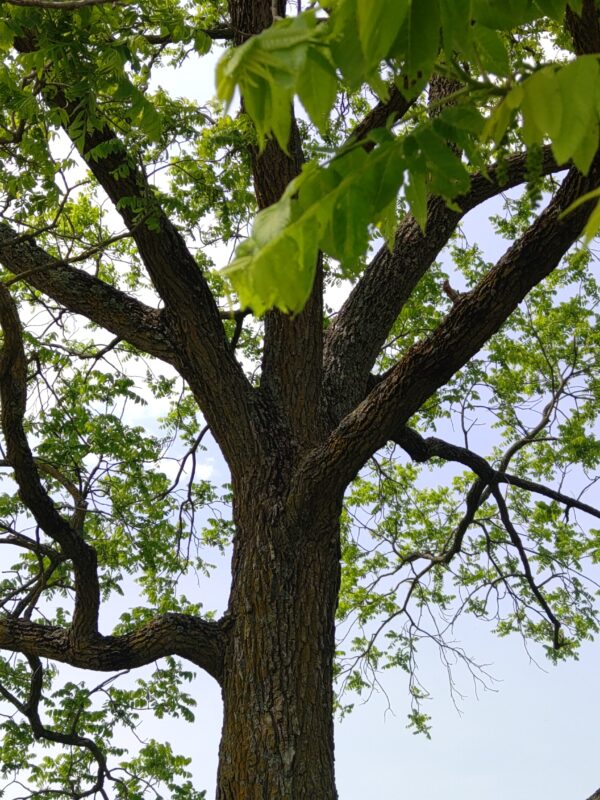
Black walnut tree.
Black Raspberry
(Rubus occidentalis)
Black raspberry is a deciduous shrub native to eastern North America. This species is commonly cultivated to bring you the raspberries you see in stores, and many cultivars are crossbred to make the best yield possible. Although farmers try their best to maximize production, the yields of these fruits are comparatively low, making them often expensive to purchase.
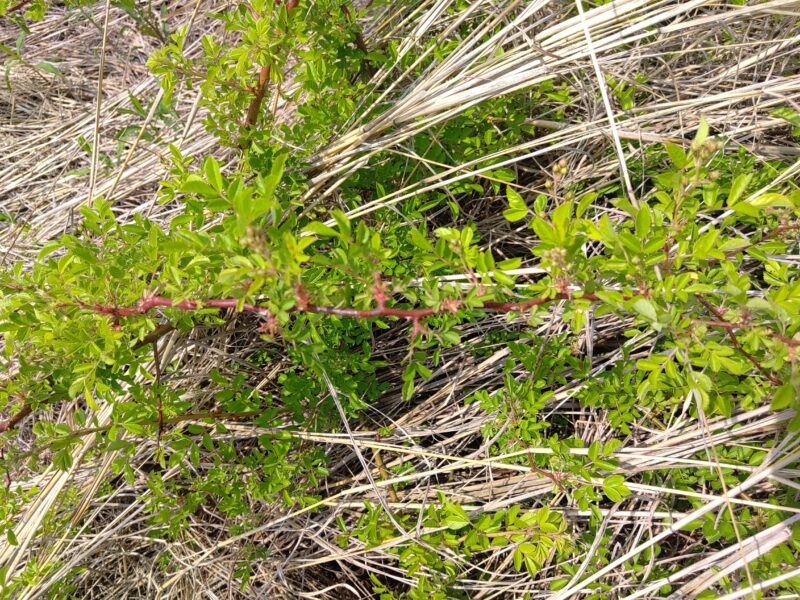
Black raspberry bush.
Eastern Redcedar
(Juniperus virginiana)
Eastern redcedar is a common conifer in the Eastern United States, although it is not actually a cedar. The heartwood has a reddish tint, and the tree is used for fenceposts and firewood mostly. Perfumes can utilize an oil from the leaves to produce a pleasant fragrance, and the berries can be used for spices!
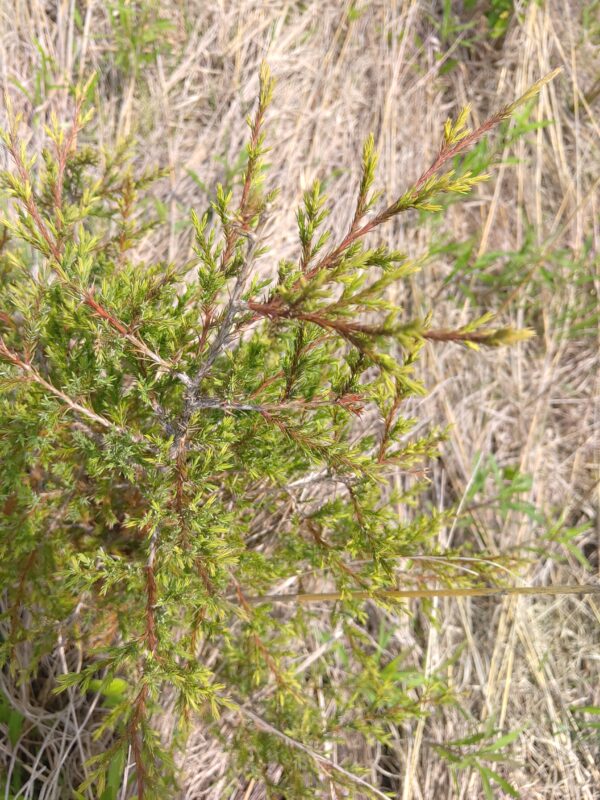
Eastern redcedar sapling.
Callery Pear
(Pyrus calleryana)
Callery pear is the one invasive I could find in Battelle-Darby. It was originally planted as an ornamental by landscapers because of its broad, dense canopy and preferred shape. The plant quickly fell out of favor for two main reasons, the first being that it is vulnerable to wind damage, something you don’t want in the windy Midwest. Because of this, as the trees got older, they would begin to strew branches about yards, creating a difficult cleanup job for the landowner. The second reason is that while in bloom, the flowers produce a stench often compared to rotting meat, which can stink up the entire neighborhood. Add the facts that this plant is not native and outcompetes native plants in the understory, and we can safely classify it as an invasive species. Ohio is on the right track for managing this ornamental, effective at the beginning of 2023 (this year!), it has become illegal to sell or plant this species. Hopefully, this means we’ll be seeing and smelling this plant much less often!
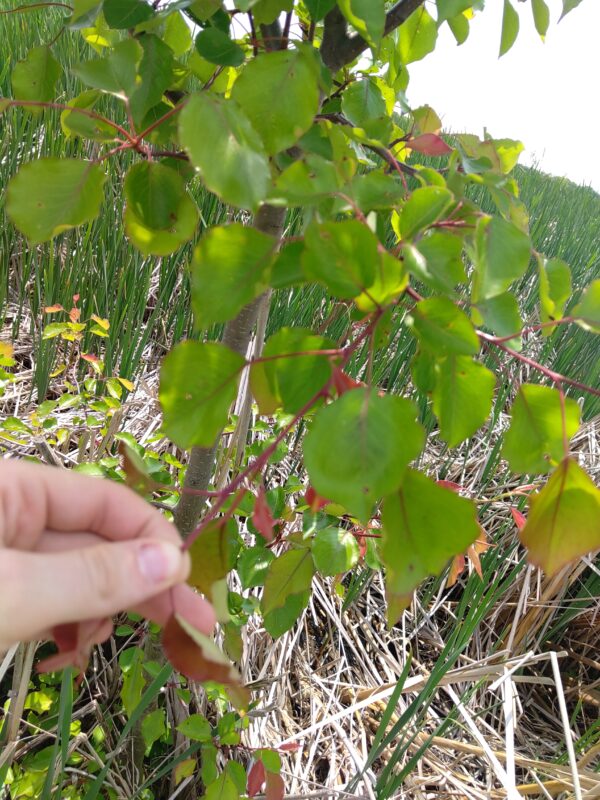
Callery pear leaves
Valerian
(Valeriana officinalis)
Valerian is a perennial flowering plant that has been naturalized in the United States. It originally hails from Europe and Asia, but its introduction has not been disruptive enough to classify it as invasive, in Ohio in any case. The state of Connecticut has actually outright banned the plant. In traditional medicine, this plant was commonly used to treat insomnia, dating back all the way to ancient Greece! The European Medicines Agency has since stated that while it is an approved insomnia treatment, there is insufficient evidence to actually support that claim.
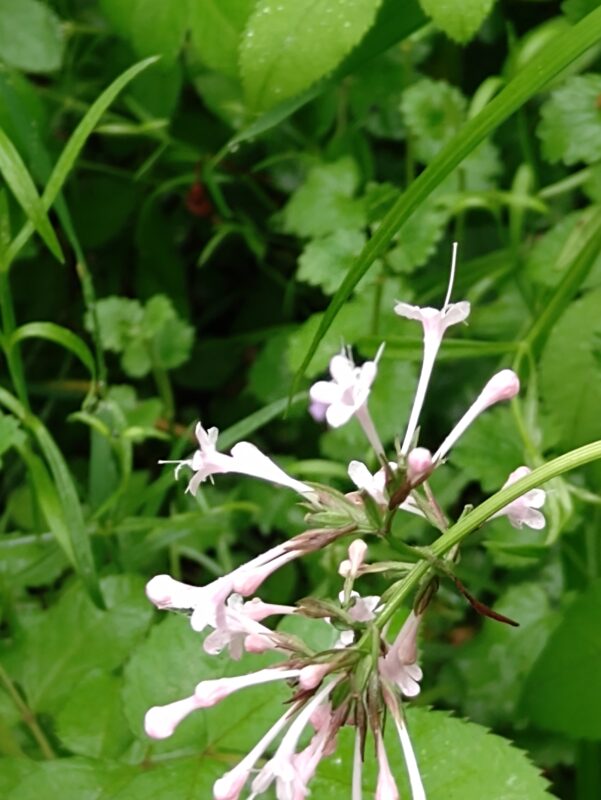
Valerian flowers with exserted stamen.
Natural History
Ohio can be separated into two halves in terms of its soil. You can essentially draw a vertical line down the center and label the East and West parts of the state by their topography and soil composition. The Eastern part of Ohio is dominated by sandstone, whereas Western Ohio has an abundance of limestone. As a much more resistant rock, sandstone deposits have resisted weathering and have inadvertently caused changes in elevation over time, as the surrounding shale weathered down to produce deep valleys.
Ohio’s original sequence of subsoil rocks begins with limestone, which is overlain by shale, which is then overlain by sandstone. This was gently tilled into a low arch before erosion began. This arch was actually a remnant of the pressures that formed the Appalachian Mountains! Erosion then cut deep where the arch was highest, which was generally over Western Ohio. Most of the erosion in Western Ohio was caused by the Teays River over about 200 million years! This river continued to wash away sandstone and shale until the glacial advance.
The reasons for the difference in topography is due to the advance of glaciers during the ice age. Western Ohio’s limestone provided little resistance, as it had been weathered away by the Teays, and the glaciers were able to progress all the way down to Kentucky! Below is a rough map illustrating where the glacial boundaries are.

Glacial boundary of Ohio. West is glaciated, East is not.
These glaciers deposited many minerals when they retreated due to warming temperatures. The deposited minerals are known as till, and are unsorted mixtures of boulders, sand, silt and clay. Due to the advance into Western Ohio, their till is high in lime and clay, whereas Easten Ohio’s lacks those minerals.
Due to the properties of lime, Westen Ohio soils are relatively impermeable and poorly drained, although very nutrient rich. Sandstone, on the other hand, is very permeable and Easten Ohio soils drain quickly, resulting in drier sites. Lime also has an effect on the pH of soil, effectively raising it to become more basic. Comparatively, Eastern Ohio soils are much more acidic.
These substrate differences mean that there are many differences in the types of plants that grow from East to West Ohio. Five plants that prefer the limey soil of the Lake Erie islands are species like redbud (Cercis canadensis), hackberry (Celtis occidentalis), blue ash (Fraxinus quadrangulata), hawthorn (Crataegus mollis) and chinquapin oak (Quercus muehlenbergii). Five plants that prefer the high-lime, high-clay composition of Western Ohio are species like sugar maple (Acer saccharum), beech (Fagus grandifolia), red oak (Quercus rubrum), shagbark hickory (Carya ovata), and white oak (Quercus alba). Five different plants prefering the acidic soil of Eastern Ohio include sourwood (Oxydendrum arboreum), Easten hemlock (Tsuga canadensis), huckleberry-blueberry (Vaccinium ssp.), greenbrier (Smilax glauca), and bellwort (Uvularia perfoliata). What a great variety we have in this state!
Next, we’re going to compare and contrast the determining factors for distribution of certain species. First is sweet buckeye and hemlock. Sweet buckeye is a species that is never found in glaciated Ohio, and it’s unsure why. The probable reason is that it is difficult for the buckeye to repopulate in areas with such high clay content. Hemlock also appears in unglaciated Ohio, although its range extends far more North than sweet buckeye. This is because the limiting factor for hemlock is more temperature-based than soil composition. Unglaciated areas in Ohio have more valleys containing cool, wet soils that hemlocks prefer, and it makes sense that they would also prefer the cool soils further North into Canada as it is seemingly unbothered by high clay and lime contents. Rhododendron also appears mostly in unglaciated Ohio, although for another reason than hemlock and sweet buckeye. The leading theory for why rhododendron remains in this part of the state is that the glacial advance simply blocked their avenues of migration, and thus they were unable to expand. These species mostly remain in what was once the Teays River due to their water-dispersal adaptations made less viable.
